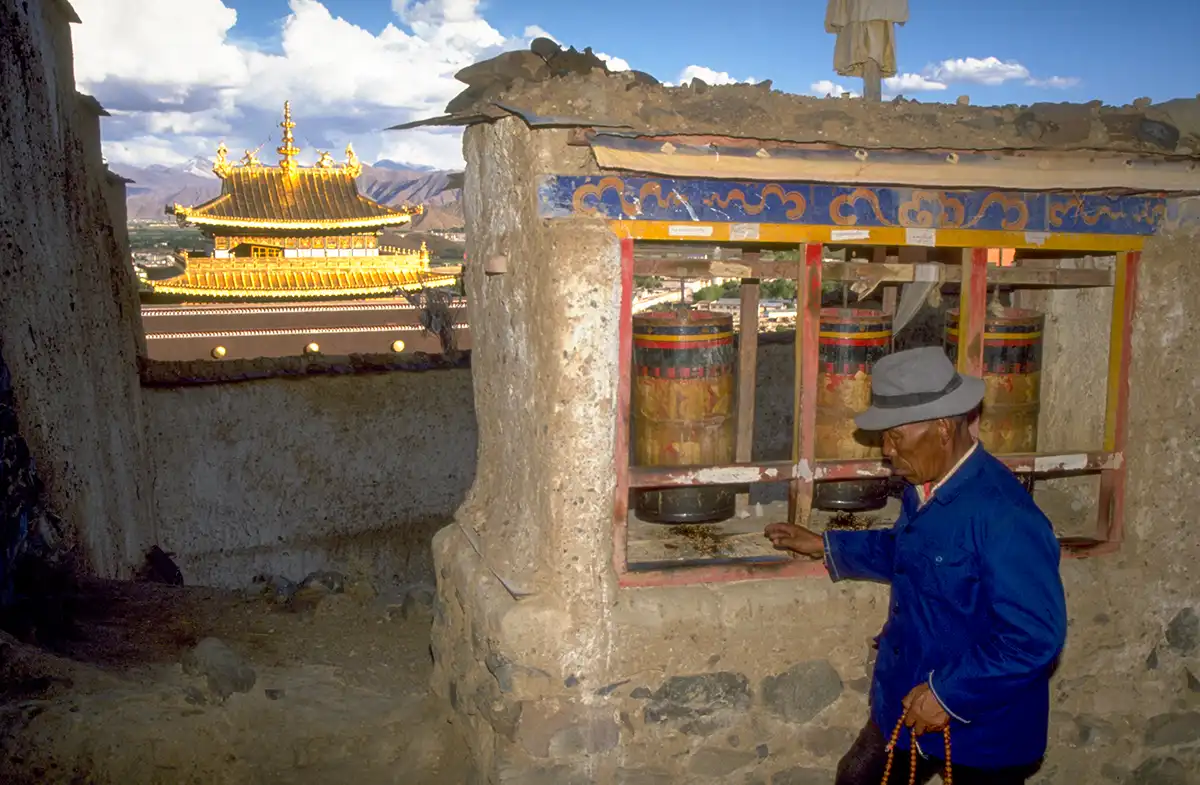Tashilhunpo and Toling Monasteries
Before the Chinese invasion of Tibet in 1951, hundreds of thriving monasteries were scattered throughout the vast country. These monasteries, many continuously occupied since the 9th century, were home to one of the world's most profound wisdom traditions as well as being repositories of remarkable collections of sacred art - murals, sculptures, and illustrated manuscripts - of unique and sublime beauty. During the 1960s and 1970s, virtually all of this was systematically and ruthlessly destroyed by fanatical Chinese participating in the Cultural Revolution initiated by Mao Tse Tung. The monks were tortured and murdered, the ancient murals were burned and ripped from the walls, the golden statues were stolen and melted down, and massive charges of dynamite blew apart the great monasteries. By 1976, the destruction had somewhat abated; Mao had died, and there were no more monasteries to plunder.
Fifty years later, however, the Tibetans continue to be violently oppressed by the Chinese. Few westerners are truly aware of the extent of the ongoing Chinese atrocities in Tibet: hundreds of monks are still imprisoned, vast areas of the country (which are off limits to foreign visitors and investigative journalists) are being stripped of their natural resources, and the Chinese make no effort to provide medical or educational services to the native inhabitants. Due to the ceaseless work of the 14th Dalai Lama and that of many thousands of individuals and non-governmental organizations around the world, growing pressure is being placed upon the Chinese government to return Tibet to its people. Thus far however, the Chinese have refused to even discuss the issue and have instead sought to deceive the international community by engaging in the "reconstruction of the monasteries". This smokescreen may indeed fool naive foreigners, yet it is revealing that only a few monasteries have received any reconstruction assistance. At those monasteries that have received aid, the reconstruction has been poorly done and underfunded (the most visible example of the reconstruction effort, the monastery of Tashilhunpo, is the seat of the Panchen Lama, who, before he died in 1989, was a puppet of the Chinese military).
Tibetan pilgrims visit Tashilhunpo, as they visit other ancient monastic sites, to access the spiritual presence deriving from both the terrestrial power of the place and the practices of the monks who have lived and meditated there over the centuries. At Tashilhunpo, they also come to pray for the spiritual health of the monastery - health that will only return with the departure of the Chinese.
In the mountains of far western Tibet are the great monasteries of Toling and Tsaparang. Once as grand, thriving, and beautiful as Tashilhunpo, they are now in total ruin because of the ravages of the Chinese. They are seldom visited these days. Few Tibetans can afford the cost of pilgrimage to such remote areas, and the twenty days of rugged jeep travel to reach the sites discourages all but the most adventurous foreigners.
Sacred Visions: Early Paintings from Central Tibet
http://www.metmuseum.org/research/metpublications/Sacred_Visions...

Martin Gray is a cultural anthropologist, writer and photographer specializing in the study of pilgrimage traditions and sacred sites around the world. During a 40 year period he has visited more than 2000 pilgrimage places in 160 countries. The World Pilgrimage Guide at sacredsites.com is the most comprehensive source of information on this subject.



